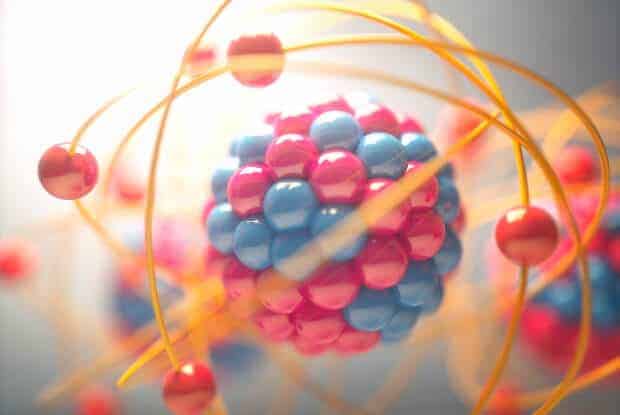What is creativity, and can it be enhanced — safely — in a person who needs a boost of imagination? Georgetown experts debate the growing use of electrical devices that stimulate brain tissue, and conclude there is potential value in the technique. However, use of these machines also raises neuro-ethical, legal, and social issues that must now be addressed.
In an article published today in Creativity Research Journal, Georgetown researchers say that the clearest problematic issues with using transcranial electrical stimulation (tES) to improve various forms of creative cognition relate to the use of the procedure in a child’s brain. This scenario is increasingly likely because tES devices are not just in clinical use for some neurological disorders but are widely being sold direct to consumer (DTC), and are being made in a do-it-yourself (DIY) fashion, researchers say.
That suggests that the tES field (those who use the devices clinically, study its myriad implications, and build and market the devices) must consider – as soon as possible – how tES use should be regarded and regulated, they say.
“There are multiple potential concerns with DIY-ers self-administering electric current to their brains, but this use of tES may be inevitable. And, certainly, anytime there is risk of harm with a technology, the scariest risks are those associated with kids and the developing brain,” says co-author Adam Green, PhD, associate professor in the Department of Psychology & Interdisciplinary Program in Neuroscience at Georgetown.
The pragmatic approach may be to educate and make the safest tools available, Green and the study’s senior author, James Giordano, PhD, say.
“DIY applications can pose certain challenges in that constraints may not be appreciated or adhered to, and in some cases, not regarded,” says Giordano, who is professor in the Departments of Neurology and Biochemistry, and chief of the Neuroethics Studies Program in the Pellegrino Center for Clinical Bioethics at Georgetown University Medical Center.
“The DIY community is certainly not cavalier or a proverbial ‘wild west’ environment. Many DIY individuals and groups employ independent institutional review boards, or establish self-regulating oversight committees to guide the scope and tenor of their work,” he says.
“However, what is important to note is that the nature of DIY engagement can also provide an environment of avant garde iterations of science, technology, methods and applications. This is not necessarily a bad thing, per se, as it may, in fact ‘push the envelope’ to some extent,” adds Giordano.
“But there is what I feel to be justified concern that such attempts could incur safety issues. In that light, we have called for an ongoing dialog with the DIY community to enable improved communication of techniques and effects so as to remain aware of what’s being done, how, and the outcomes of such work that may be important to advancing the field and clinical care of any adverse manifestations.”
The authors also say another concern is that increasing use of tES could precipitate the advent of a new and medically accepted “disorder” that would then require tES treatment.
Simply shifting a threshold of what qualities and capabilities are considered to be “normal” establishes a basis for any intervention to be regarded as a treatment, they say.
Some people may confuse tES with “shock” therapy (electro-convulsive therapy or ECT), but tES and ECT are very different, Giordano says. “The current used in even research and clinical tES devices is several orders of magnitude less than that which is used in ECT, and the current that is delivered in direct-to-consumer machines is even less.”
Giordano, whose work addresses mechanisms and actions of various forms of neuromodulation, adds that the effect of tES on neurons depends both on the method of tES being used than on the region being stimulated.
There is now growing interest in the use of tES for treatment of a number of neuro-psychiatric conditions, such as using different forms (direct and alternating current transcranial stimulation) to reduce particular signs and symptoms of anxiety and depressive disorders, to affect memory in neurodegenerative disorders, to reduce certain cognitive features of Parkinson’s disease, and some forms of chronic pain, as well as to potentially help patients who have had a stroke-induced speech disorder communicate.
Green’s work focuses on testing whether tES can, indeed, bolster creativity. In one study, he looked at whether tES to the frontal pole of the brain, to facilitate neural activity in this brain region, would support creative verbal thinking and reasoning. He used tests of creative analogical reasoning and word association to measure creativity. For both tasks, the ability to make less obvious connections between words is considered to require more abstract creative thinking.
The result of the study, published in 2017 in Cerebral Cortex, did indeed suggest that creativity may be enhanced with the meticulous and controlled application of this sophisticated “thinking cap” provided by tES.
“Our work in the lab involves careful computer modeling of tissues in the head,” he says. “It’s important to understand where the electric current is going and how it is behaving.”
But even the concept of creativity is up for discussion, adds Green, who is President-elect of the Society for the Neuroscience of Creativity.
“The stock definition of creativity is something like, generating or finding ideas/solutions that are both novel and useful,” he says. “But I can tell you that there is much discussion, even among creativity researchers about the best operational definition(s) to use. My strong sense is that it is more important to study activities that are clearly creative than it is to try to identify a single activity that is creativity.”


